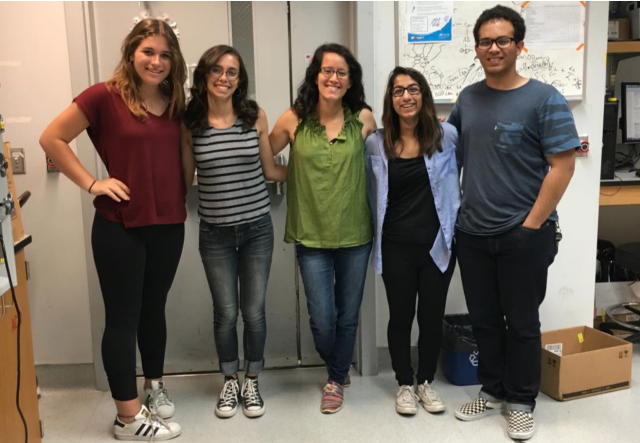Mentor
Izzy Jarvis - Biomolecular Science and Engineering
Advisor
Samir Mitragotri - Chemical Engineering
Effect of Shear Forces on Nanocrystal Drug Carriers
Interns
Megan Castiel - Biochemistry
Celeste Parra - Biochemistry
Ekta Shahani - Chemical Engineering
Youssef Sibih - Chemistry

Project Description
Nano-particles, carriers, and crystals have been explored widely in the field of drug delivery not just in cancer research but also for other varied disease models such as Alzheimer’s, heart disease, and multiple sclerosis. Many of these formulations follow the same canonical route of characterization and validation. They are synthesized, characterized at the chemical level to confirm the presence of polymers, targeting ligands, or successful surface chemistry conjugation. Afterwards, they are tested with in vitro toxicity assays and then upon successful results, are moved into in vivo survival, toxicity, distribution, and pharmacokinetic studies. Between in vivo and in vitro there often is not a study incorporated to verify the platform in question can survive and perform under physiological stress conditions including but not limited to: shear stresses and strains associated with flow at the micro level and binding properties within complex vessel architectures. These properties are immensely important to understand because - though a platform may release a cargo at a set temperature and under certain rocking/rotation conditions and though the platform might remain shelf stable and intact (no leakage or breakdown) at room or fridge temperatures and though the platform may perform optimally with cultured cells under static conditions these parameters are not indicative whatsoever of how that exact same platform will behave once it is subjected to higher flow rates and the complex architectures of blood vessels found in vivo.
This project will focus primarily on the effect of vessel architecture and shear stresses on a nanocrystal coated with a polymer – small molecule conjugate platform. Preliminary Zeta Potential studies have shown surface charge changing between nanocrystals batches pre and post flow through complex vessel architecture devices, known in our lab as Microvasculature Devices or MVD’s. Ligand shearing off the surface of the nanocrystals is the current leading hypothesis for the change in surface charge before and after flow through the MVD’s. Rudimentary experiments with Straight Channel Devices (SCD’s) have lead us to believe the flow or shear stress and not the vessel architecture are responsible for the ligand shearing.
Project Files
